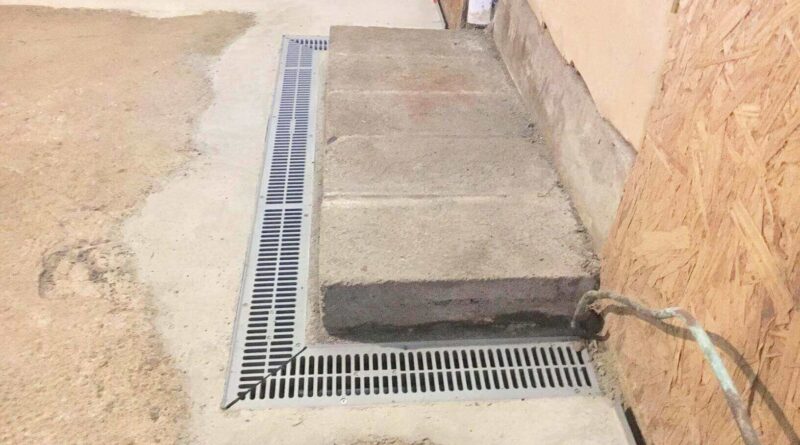Proper outdoor drainage is one of the most essential yet overlooked parts of landscaping. Without an efficient drainage system, your beautiful landscaping could soon be water-sodden. Worse still, poor surface water drainage can lead to property damage due to dampness and flooding. There are also health risks associated with stagnant water.
A trench drain system can help you overcome all these drainage problems. This system consists of elongated surface water to drain into before it is diverted away from your property. This could be surface water from a driveway, sidewalk, parking lot, un-guttered roof edge, or another landscaping area. The water flows into the drain through trench drain grates installed on top.
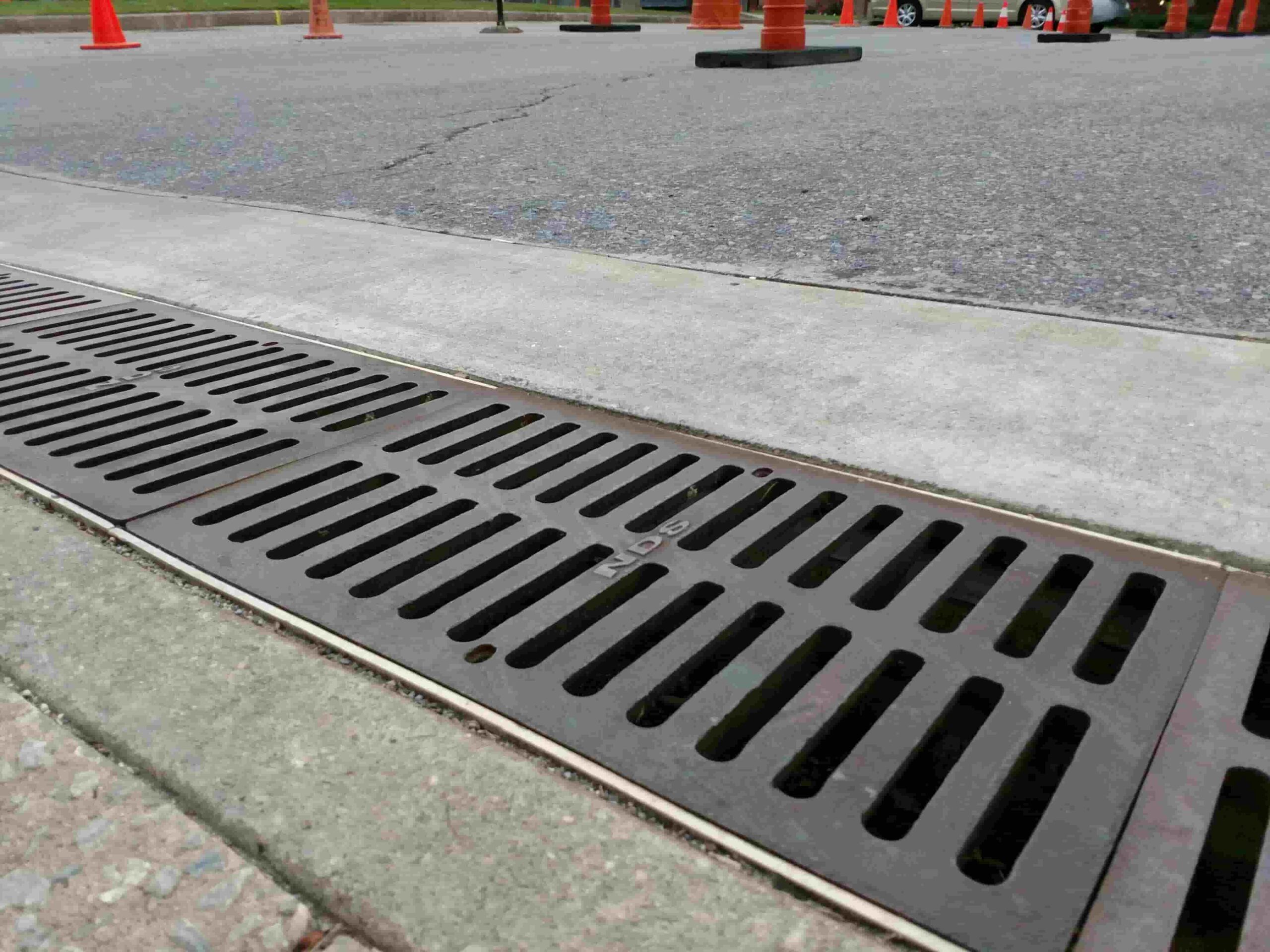
source: pinterest.com
The drain takes water away from these areas to protect your landscaping and other investments. These drains are thin in design to facilitate the fast flow of water. This drainage system is versatile, and you can choose from a variety of materials and styles to suit your drainage requirements.
How do you maximize the performance of your trench drain? This post looks at some considerations to ensure you get the best out of this drainage solution.
Flow Rate, Slope, and Capacity
Before purchasing and installing your drains, you must review your unique drainage needs. Every landscape or property has its own water flow, and this is what determines the size of the drain required.
For instance, if you have a wide parking lot in a sloping area, the water flow rate will be heavy. You’ll require a wide drain to handle this capacity. On the other hand, if you want to drain water from your home’s outdoor area, you need a smaller drain.
Load Capacity
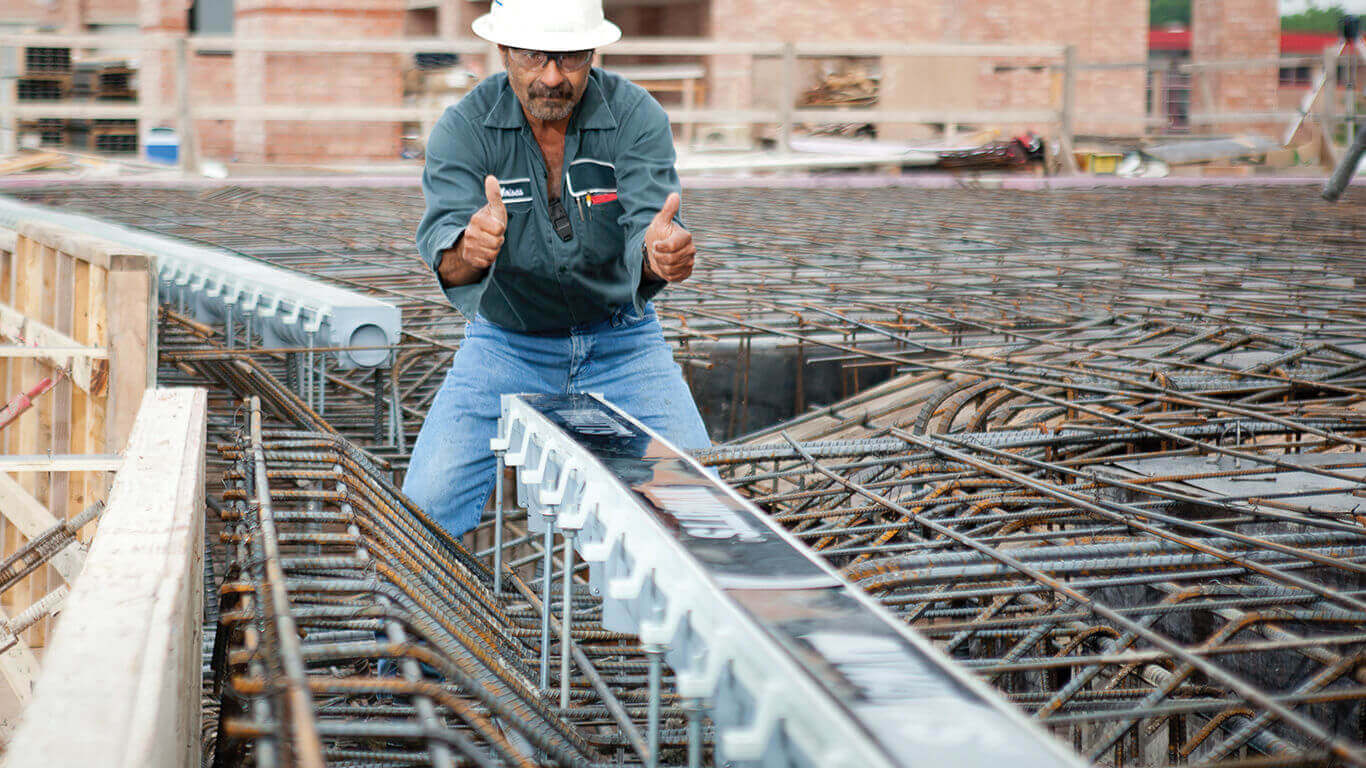
source: watts.com
There’s more to choosing a good trench drain than its capacity to handle water flow. You have to consider what will pass over the drain to determine the drain material and quality of trench grates to use.
For heavy-traffic areas such as parking lots, airports, docking areas, warehouses, or car washes, you need the strongest trench grating to carry the load of heavy vehicles. You should implement a drain grate system that can handle the load above without compromising the trench drain.
Maintenance
The best drainage system is low-maintenance and doesn’t require specialized cleaning procedures. A lot of debris will pass through these drains and that’s why you should install a trench drain system with easy-to-open trench drain grates.
It’s easy to lift the grating, clear any debris or unblock the drain. The material used should be durable, but in case of replacement, it should be easy to find any parts required.
Consider Available Materials
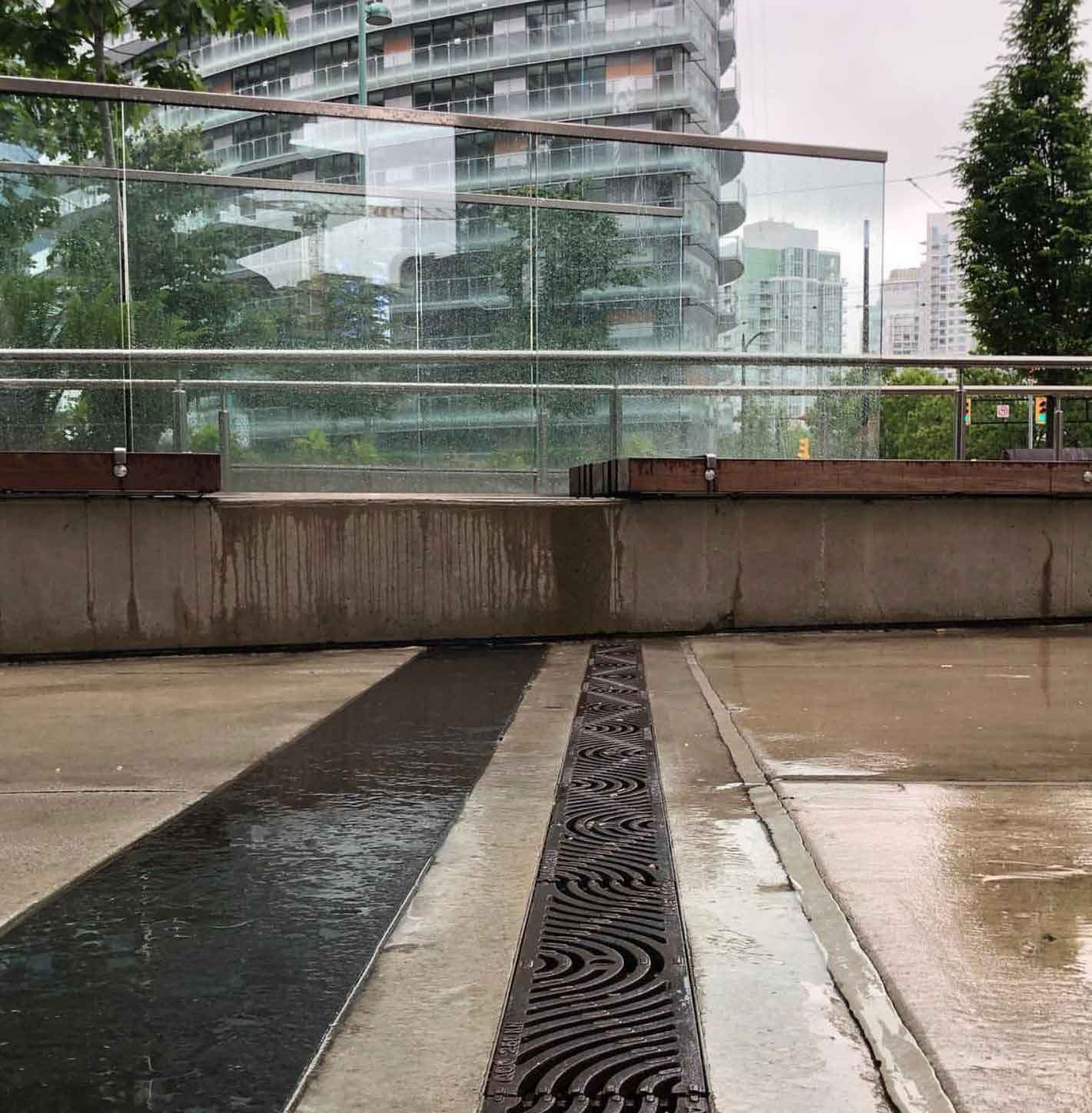
source: swiftdrain.com
You have a wide variety of materials for both the drains and the grating. Common drain materials include:
- Plastic
- Galvanized steel
- Ductile iron grates
- Cast iron grates
- Polymer concrete
- HDPE trenches
- Concrete
- FRP (Fiber Reinforced Plastic)
- GFRPC (Glass fiber reinforced polymer concrete)
You can choose from these materials and others such as natural stone and engineered stone for the grate systems. Each of these materials has unique qualities, and you should match the trench drain material with the application.
Compare characteristics such as compressive strength, tensile strength, flexural strength, impact resistance, and thermal expansion. You should also consider bond strength, bearing area, fire resistance, abrasion resistance, chemical resistance, and UV resistance.
Aesthetics
While the main focus is on the system’s function, you should also consider the impact it will have on your landscaping. The drainage system becomes part of your outdoor and affects the curb appeal. Find an attractive drainage system that easily blends with the rest of your property.
Consider the Surroundings
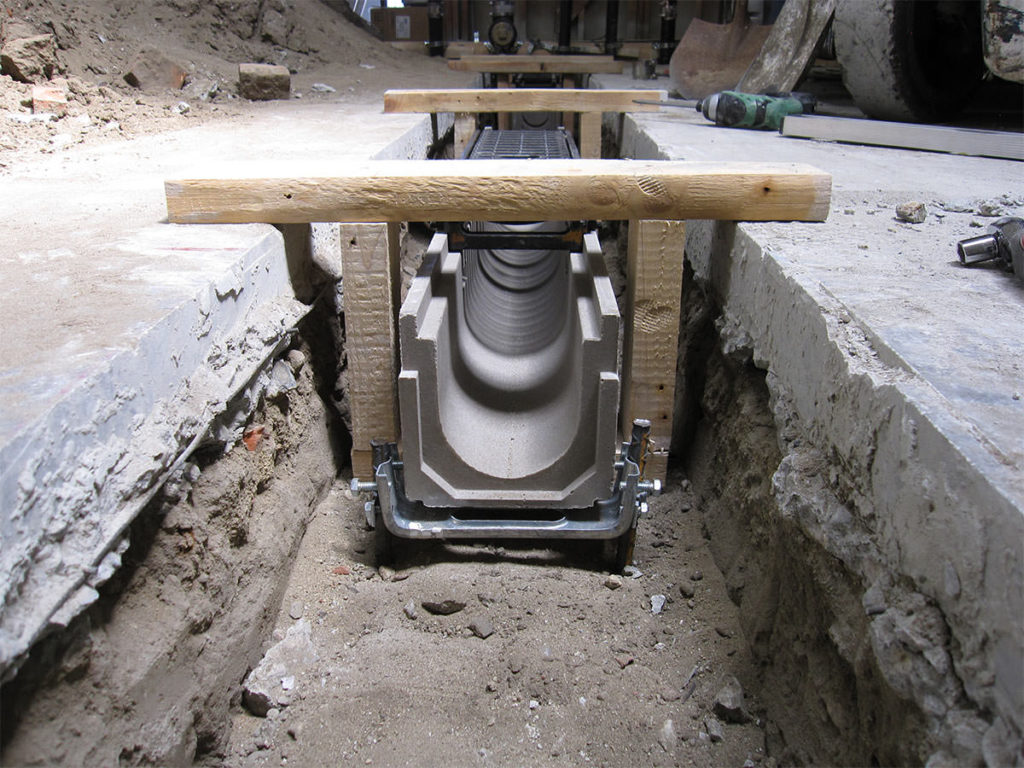
source: extremeepoxycoatings.com
When designing a drainage system, consider what will surround it now and in the future. Look at the slope of the land, nature of the soil, trees around, and future plans for the land.
With these considerations in mind, you can choose the best design, material, size, and layout for your drainage system. You should also consider the site restrictions and utilities and identify any that need relocation.
Local/Federal Laws
Your drainage system must meet all local building codes and regulations. Before commencing the project, talk to your contractor to determine the licenses required or local/federal requirements.
What will the Trench Hold?
In addition to storm water, there might be some other liquids flowing through the trench drain. In such a case, you have to choose a heat and corrosion-resistant drain material and grating.
Plan for the Unexpected
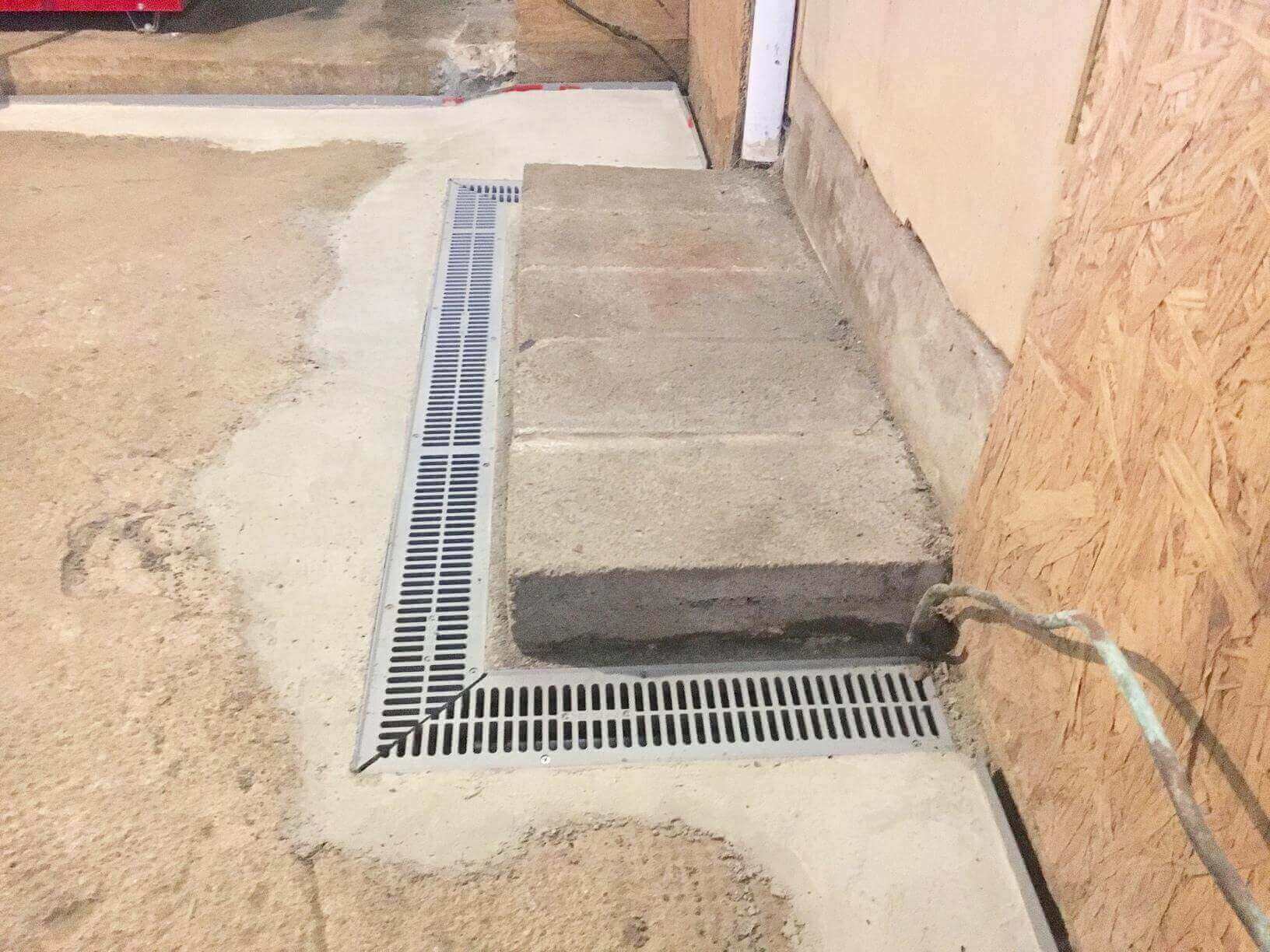
source: treehouseinternetgroup.com
Your area might not experience heavy floods today, but the weather these days is unpredictable. As such, design and install a drainage system that can at least cope with more flow in case of freak weather.
Safety
Don’t compromise on safety when installing a trench drainage system. Broken or loose grates, wide slot openings, or ineffective drains can become costly hazards. Look for products that meet the highest safety standards, including ADA compliance. This protects you and other users.
Final Thoughts
When choosing trench drains for your project, take time to review all these factors. They will help you install a more efficient, safer, and low-maintenance drainage for your property. Buying the drainage system from a reputable manufacturer is the first step to protecting your property from water damage.

